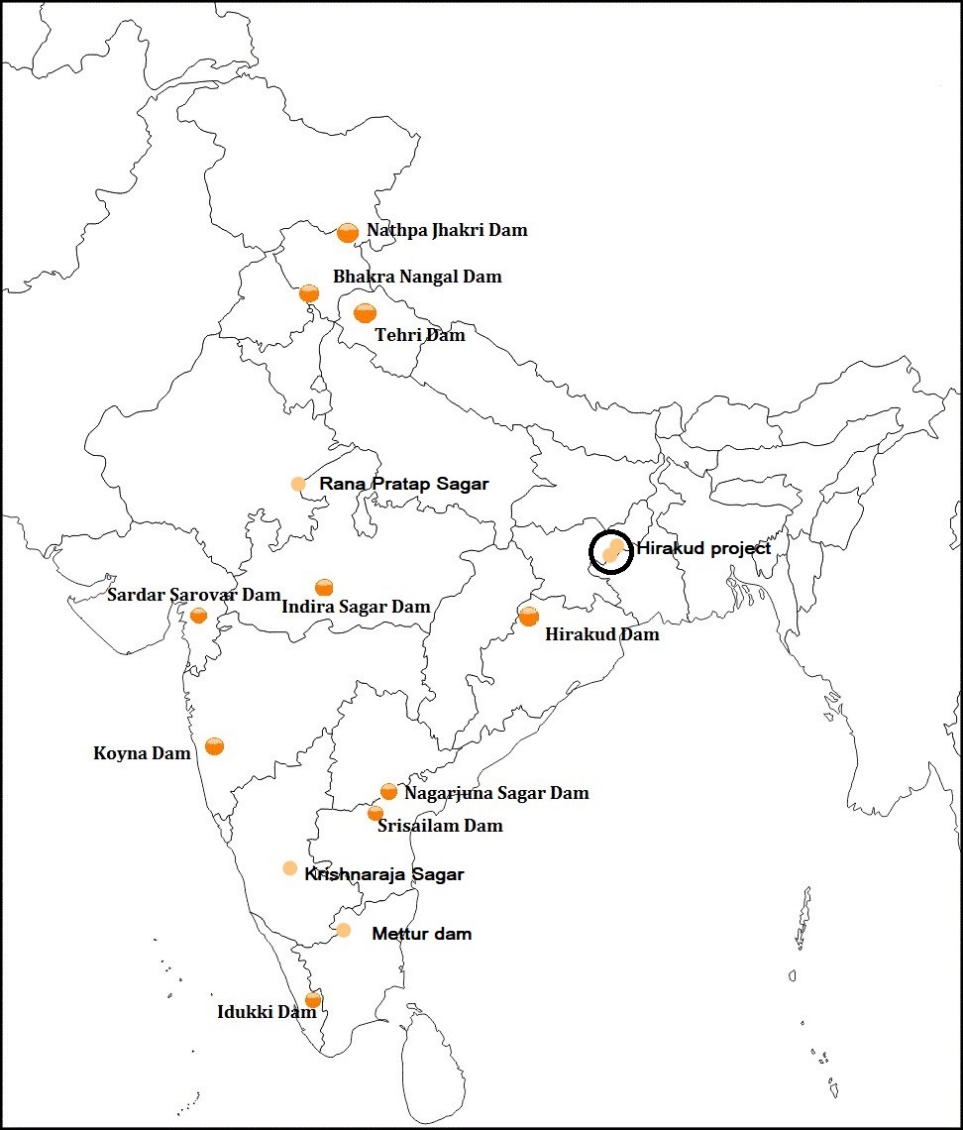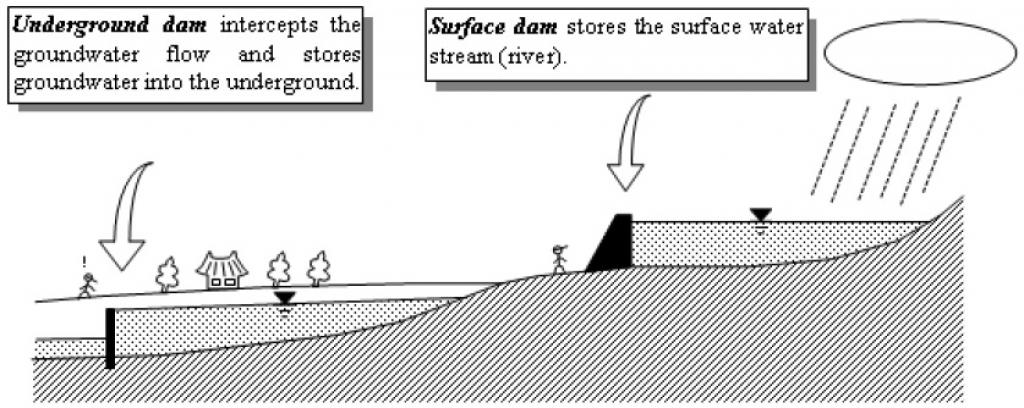Dam Safety Bill, 2019
2021 DEC 6
Mains >
Disaster Management > Disaster mitigation > Dams and reservoirs
IN NEWS:
- The Dam Safety Bill was passed by Parliament amid strong objections from the Opposition and State governments.
DAMS IN INDIA:
- As on June 2019, India ranks third globally with 5,745 large dams. (Includes dams under construction).
- Of these, 5,675 large dams are operated by states, 40 by central public sector undertakings, and five by private agencies.
- Most of these large dams are in Maharashtra (2394), Madhya Pradesh (906), and Gujarat (632).
- According to a UN report “Ageing water infrastructure: An emerging global risk”, India's current dam construction rate is among the world's highest.


WHY INDIA NEED DAMS:
- Water security:
- Due to the large physiographic diversity of the country, there is a significant variation in water availability, both spatially and temporally. Hence, dams are crucial for ensuring the water security of the Country.
- Irrigation:
- Large dams are vital in providing year-round irrigation to farm fields. For eg: Bhakra Nangal, Beas projects and Indira Gandhi canal played a major role in the success of green revolution in the Punjab plains.
- Hydropower:
- Dams provide cheap hydroelectric projects, which in turn sustain industrial growth and domestic power consumption. Eg: The Mettur dam in Tamil nadu is a major contributor to the development of Aluminum industries in Salem.
- Flood control:
- Large dams are a crucial component of all flood control projects in India. For eg: The Damodar valley project, completed in 1948, still plays a crucial in controlling the floods along Jharkhand and West Bengal.
- Ecological regulation:
- Dams and barrages are used to control the salinity and ecological balance of delta regions. For eg: One of the objectives of the Farakka barrage is the reduction in salinity of water and thus improvement in availability of potable water to Kolkata and surrounding areas.
- Inland navigation:
- Dams help maintain a steady flow in the rivers, which in turn promotes inland water transport. For Eg: The Farakka barrage forms a major part of the National Waterway 1.
- Recreation & income source:
- Dams and reservoirs are popular tourist attractions in India. They also provide income sources to local population via inland fisheries, boating and hospitality services.
THREATS POSED BY AGEING DAMS:
According to the UN report, over 1,115 large dams in India will be at roughly 50 years mark by 2025. Such aging embankments across the country pose a growing threat.
- Enhances vulnerability to disasters:
- The older a dam, the more vulnerable it becomes to collapse due to structural decay, earthquakes, hydrostatic pressure etc. The longer a reservoir lasts, the chances of reservoir-induced earthquakes in the region increase.
- The lower reaches of all major dams are densely populated. For eg: Three million people live downriver of the 125-year-old Mullaperiyar Dam.
- Aggravates threat from climate change:
- Old dams were designed and built on the basis of hydrological records in a pre-climate change era. With climate change bringing more extreme floods, aging dams threaten to become lethal.
- Alters ecological stability:
- Prolonged damming of rivers affects the fauna and flora in the river basins. They can lead to increased land degradation and encroachment by new invasive species.
- Eg: Damming the river, coupled with water intensive agriculture, diversion of land and climate change has led the Kaveri delta to shrink by 20%.
- Creates recurring conflicts:
- Increasing concerns over dam safety has been the root cause of river water disputes in India. The most notable is the Mullaperiyar dispute between Kerala, the state under threat, and Tamil Nadu, the state upstream that operates the dam.
- Increases cost of maintenance:
- Ageing dams require expensive repairs. Also, siltation reduces the capacity of dams. Hence, the net return from large dams diminishes in the long run.
WHY IS THE LEGISLATION NECESSARY?
- Increasing dam failures:
- Since 1979, there were 42 instances of dam failure, the latest being Annamayya reservoir in Kadapa district of Andhra Pradesh that led to the death of at least 20 people in November 2021.
- Ageing dams:
- At present, over 75% of Indian dams are more than 20 years old and about 220 dams are more than 100 years old. The ageing of dam assets warrants serious concern on their safety aspects.
- Absence of legal backing:
- There are many protocols for ensuring dam safety. However, as of now these protocols are not legally mandated, and the agencies concerned (including Central and State Dam Safety Organisations) have no powers to enforce them. The Dam Safety Bill seeks to correct this anomaly.
ABOUT DAM SAFETY BILL 2019:
- It proposes to help all states and Union Territories adopt uniform dam safety procedures.
- It aims to provide for surveillance, inspection, operation and maintenance of the specified dam for prevention of dam failure-related disasters and to provide for institutional mechanism to ensure their safe functioning.
Key Features:
- Applicability:
- The Bill covers those dams having the height of over 15 meters and between 10 and 15 meters with certain stipulations.
- National Committee on Dam Safety:
- Its functions include evolving dam safety policies and recommend necessary regulations.
- It comprises of the chairman of the Central Water Commission, a maximum of 10 representatives of the central government in the ranks of joint secretary, a maximum of seven representatives of the state governments, and three experts.
- State Committee on Dam Safety
- It will supervise state dam rehabilitation programs, review the work of the SDSO, and review the progress on measures recommended in relation to dam safety, among others.
- State governments may notify the qualifications, and functions of officers of the State Dam Safety Organisations.
- They may also notify dam safety measures to be undertaken by owners of non-specified dams.
- National Dam Safety Authority
- Its functions include implementing policies of the National Committee, and resolving matters between State Dam Safety Organisations (SDSOs), or between a SDSO and any dam owner in that state.
- The central government may notify the qualifications, and functions of the officers of the National Dam Safety Authority.
- State Dam Safety Organisations (SDSOs)
- Its functions include keeping perpetual surveillance, inspecting, and monitoring dams
- Obligation of dam owners:
- Dam owners will be responsible for the safe construction, operation, maintenance and supervision of a dam.
- They must prepare an emergency action plan, carry out periodic risk assessments and develop a comprehensive dam safety evaluation
- They must provide a dam safety unit in each dam, which is entrusted with inspection of dams.
- Offences and penalties:
- Anyone obstructing a person in the discharge of his functions under the Act or refusing to comply with directions may be imprisoned for a year.
|
Dam Rehabilitation and Improvement Project (DRIP):
- The project aims to improve safety and operational performance of selected dams, along with institutional strengthening the institutional mechanisms.
- The six-year Project is implemented by Ministry of Water Resources, River Development & Ganga Rejuvenation through Central Water Commission, with World Bank assistance.
- Under the project, presently 198 dam projects are being rehabilitated.
|
CRITICISM OF THE BILL:
- Undermines federalism:
- Several States, including Karnataka, Kerala, Tamil Nadu and Odisha, opposed the legislation on the ground that it encroached upon the sovereignty of States to manage their dams.
- Potential to create conflicts:
- The bill can result in some states losing control over some dams. For eg: Tamil Nadu fears that it could lose its hold over four dams which are located in Kerala. This could lead to major interstate conflicts.
- Question of constitutional validity:
- As per the Constitution, states can make laws on water including water storage and water power. However, Parliament may regulate and develop inter-state river valleys if it deems it necessary in public interest. The question is whether Parliament has the jurisdiction to regulate dams on rivers flowing entirely within a state.
- No mention of compensation:
- The bill is silent on the payment of compensation to people affected by dam projects. This is cited as another shortcoming.
- Multiplicity of agencies:
- The Central Dam Safety Organization (CDSO) functions as the apex body to advise States on issues of dam safety. Besides this, there is the Central Water Commission (CWC). Creation of more agencies could complicate dam management.
WAY FORWARD:
- Given that about 92% of India’s land is spread over inter-State River basins, it makes sense to create a central legislation. However, the Centre should take efforts to bring the States onboard. For this, it must hold talks with the States to allay their fears and frame rules suitably for legislation.
- Reassess the feasibility of dams, both existing and planned ones, with special emphasis on the rising demand for water and the possible impacts of climate change.
- Replace hydropower with alternative sources of energy, such as decentralized renewable power.
- Increase water use efficiency, by promoting micro irrigation techniques, mandatory recycling of industrial wastewater and community-led management of water resources.
- Decommission old dams: Proactive measures must be taken to decommission obsolete dams
- Promote academic research and development: Some dams are so big it is difficult to even approach the problem of their decommission. Hence, there is a need to foster research and technological development to decommission them.
- Promote sub-surface dams: Unlike a surface dam, water loss by evaporation is minimal in underground dams. In a country like India, where evaporation rates are very high, this can be the game changer. Countries like Japan that have created multiple sub-surface dams.

|
CASE STUDY: Mullaperiyar and Dam safety bill:
A possible way of finding a permanent solution for the Mullaperiyar dam issue is perhaps laid down by the Dam Safety Bill.
- With the NDSA performing the role of a neutral dam safety organisation, it will be possible to bring transparency in dam safety data and mitigation measures — an essential requirement for the confidence building between two States.
- Access to a larger pool of dam safety knowledge and other needed resources (e.g., tools of investigations and mathematical modelling) will help Kerala in allaying its fears, and Tamil Nadu will have the benefits of improved mitigation designs.
- In the new scenario, Tamil Nadu will be able to seek greater cooperation from Kerala in undertaking added measures of dam strengthening; and Kerala will be able to seek quicker response from Tamil Nadu in emergency measures called for during floods.
- Mullaperiyar dam: https://www.ilearncana.com/details/Mullaperiyar-dam/2609
|
PRACTICE QUESTION:
Q. Discuss the significance of Dam Safety bill, 2019 in strengthening the disaster mitigation capability of India?


